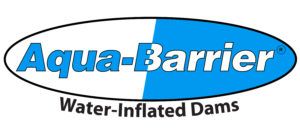At Hydrological Solutions, we like to keep our community, customers, and team members informed about our products, our industry, and items in the news. Today we are focusing on the use of the cofferdam throughout history.
First of all we want to answer the question – what is a cofferdam? It is a physical structure placed in a waterway allowing the contractor to dry out their work area; enabling them to perform “in-water” construction process in a dry environment.
Here is the timeline of cofferdam use recorded in history:
- In 539 BC, King Cyrus of Persia used earthen cofferdams to temporarily divert the Euphrates river allowing the capture of the city of Babylon. Babylon’s dominance ended and the rule of the Medo-Persian empire began.
- The Romans used temporary wood pilings as cofferdams to build Trajan’s Bridge across the Danube river in 102 AD in modern day Romania.
- Sandbags were first used during the Napoleonic Wars in the 1800’s. They were first used for protection during battle and later used as temporary dams for water control.
- Early 1900’s a milestone in cofferdams was introduced in the form of steel sheet pile by an engineer in Germany. Larssen’s “U” shaped piling with its interlock design is still used today.
- The Portadam system entered the market place in the 1970’s consisting of a metal frame work with a plastic liner.
- Aqua-Barriers were introduced into the market place in 1996 featuring a patented internal baffle system which provides stability.
As you can see, the use of cofferdams have been around for a very long time. It has continued to improve and advance throughout the years.
We also wanted to give you a little history of Hydrological Solutions:
- Hydrological Solutions commenced operations in 1996.
- The Aqua-Barrier internal baffle system received a US patent in 1997.
- Introduced WIPP (water inflated property protector) for flood protection in 2000.
- Insta-Tank water storage system was introduced in 2003.
For more information on the Aqua-Barrier Inflatable Cofferdam, please contact us today.


